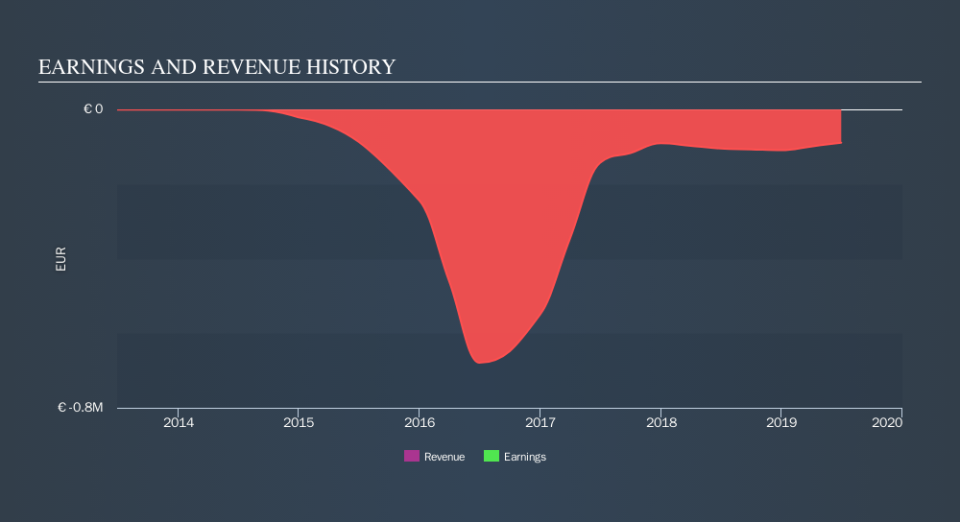Capital One AG's (FRA:8CA) Single Biggest Risk For Investors

Trailing twelve-month data shows us that Capital One AG's (FRA:8CA) earnings loss has accumulated to -€89.3k. Although some investors expected this, their belief in the path to profitability for Capital One may be wavering. The single most important question to ask when you’re investing in a loss-making company is – will it need to raise cash again, and if so, when? Cash is crucial to run a business, and if a company burns through its reserves fast, it will need to raise further funds. This may not always be on good terms, which could hurt current shareholders if the new deal lowers the value of their shares. Capital One may need to come to market again, but the question is, when? Below, I’ve analysed the most recent financial data to help answer this question.
View our latest analysis for Capital One
What is cash burn?
Capital One currently has €585k in the bank, with negative free cash flow of -€161.5k. The riskiest factor facing investors of Capital One is the potential for the company to run out of cash without the ability to raise more money. Capital One operates in the asset management and custody banks industry, which on average generates a positive earnings per share, meaning the majority of its peers are profitable. Capital One faces the trade-off between running the risk of depleting its cash reserves too fast, or risk falling behind its profitable competitors by investing too slowly.
When will Capital One need to raise more cash?
We can measure Capital One's ongoing cash expenditure requirements by looking at free cash flow, which I define as cash flow from operations minus fixed capital investment, is a measure of how much cash a company generates/loses each year.
Free cash outflows grew by 62% over the past year, which is substantial. My cash burn analysis suggests that Capital One has a cash runway of 2.1 years, given its current level of cash holdings. This may mean it will be raising new funds sooner than shareholders would like. However, if the company maintains its burn rate at the current level of -€161.5k, then Capital One likely will not need to raise capital any time within the next three years. Although this is a relatively simplistic calculation, and Capital One could reduce its costs or open a new line of credit instead of issuing new shares, this analysis still gives us an idea of the company’s timeline and when things will have to start changing, since its current operation is unsustainable.
Next Steps:
This analysis isn’t meant to deter you from Capital One, but rather, to help you better understand the risks involved investing in loss-making companies. The cash burn analysis result indicates a cash constraint for the company, due to its high cash burn growth and its level of cash reserves. The potential equity raising resulting from this means you could potentially get a better deal on the share price later on, if the company raises capital. Keep in mind I haven't considered other factors such as how 8CA is expected to perform in the future. You should continue to research Capital One to get a better picture of the company by looking at:
Historical Performance: What has 8CA's returns been like over the past? Go into more detail in the past track record analysis and take a look at the free visual representations of our analysis for more clarity.
Management Team: An experienced management team on the helm increases our confidence in the business – take a look at who sits on Capital One’s board and the CEO’s back ground.
Other High-Performing Stocks: If you believe you should cushion your portfolio with something less risky, scroll through our free list of these great stocks here.
NB: Figures in this article are calculated using data from the trailing twelve months from 30 June 2019. This may not be consistent with full year annual report figures. Operating expenses include only SG&A and one-year R&D.
We aim to bring you long-term focused research analysis driven by fundamental data. Note that our analysis may not factor in the latest price-sensitive company announcements or qualitative material.
If you spot an error that warrants correction, please contact the editor at editorial-team@simplywallst.com. This article by Simply Wall St is general in nature. It does not constitute a recommendation to buy or sell any stock, and does not take account of your objectives, or your financial situation. Simply Wall St has no position in the stocks mentioned. Thank you for reading.

